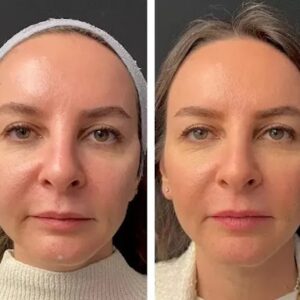Source: https://biodynamicbreath.com/blogs/holotropic-breathwork-workshop/
In recent years, holotropic breathwork workshops have grown in popularity among seekers, healers, therapists, and spiritual explorers. If you feel drawn to dive deeper into your psyche, release emotional blockages, or expand your awareness, this method offers one of the most potent practices available today.
In this article, we’ll explore:
- What holotropic breathwork is and its origins
- The science and transformative potential behind it
- How a typical workshop is structured
- Who can benefit — and who should proceed with caution
- Tips to prepare for a workshop
- How to choose a trustworthy workshop
- And finally, how Biodynamic Breathwork Institute brings this to life
Let’s begin.
Origins & Philosophical Foundations
Holotropic breathwork was developed in the 1970s by Dr. Stanislav Grof and Christina Grof, combining insights from transpersonal psychology, psychotherapy, and Eastern contemplative traditions. Its name comes from the Greek holos (whole) and trepein (toward), implying “moving toward wholeness.” At its core, the approach honors the idea that each person contains an inherent drive toward healing, insight, and integration.
While Grof’s original work was part of psychedelic-assisted research, he later formulated holotropic breathwork as a non-chemical avenue to access altered states of consciousness, facilitate emotional release, and support psychological transformation. Over decades, it has become a key modality in the breathwork movement.
The Science & Transformational Power
Holotropic breathwork uses an accelerated, continuous breathing pattern (often paired with evocative music) to shift the nervous system and brain state. This practice can:
- Encourage access to “non-ordinary states” of consciousness, where deeper emotional content, imagery, or somatic material arises
- Allow the release of stored tension, trauma, and stuck energy
- Support integration of inner material through post-session processing
- Modulate stress via respiratory and autonomic pathways
Research and anecdotal reports indicate many participants experience reduced anxiety, heightened emotional clarity, breakthroughs in self-understanding, somatic release, and spiritual insight.
One widely reported statistic is that in many well-run holotropic breathwork workshops, 80 % or more of attendees report meaningful shifts in anxiety, clarity, and emotional balance. (As cited in event summaries)
What a Holotropic Breathwork Workshop Looks Like
A well-designed workshop generally includes:
- Opening circle & intention setting
Participants gather, facilitators explain the structure, group agreements are made, and individual intentions are set. - First breathing session
In pairs (one breather, one sitter), participants engage in controlled, accelerated breathing. Music supports emotional flow. Sitters quietly attend to their partner if needed. - Integration period
After breathing, time is given for creative processing: journaling, drawing, movement, or expressive modalities. - Lunch / rest break
- Second breathing session (often reversing roles)
The breath journey continues, exploring deeper, or shifting perspective. - Final integration circle & closing
The group gathers to share experiences, support one another, and close the container.
Throughout, facilitators and sitters provide care, intervening when necessary to support emotional safety, grounding, or stabilization.
Workshops might span a single day, extended weekend, or retreat format—depending on depth and intention.
Who Benefits — and Who Should Be Cautious
Potential beneficiaries:
- Individuals seeking emotional release, self-growth, or deeper insight
- People working through grief, trauma, or life transitions
- Therapists, coaches, or healers who wish to deepen their understanding of altered states
- Spiritual seekers exploring transpersonal dimensions
Contraindications / risk factors:
- Serious cardiovascular disease or hypertension
- Pregnancy
- Severe psychiatric conditions (e.g. active psychosis, uncontrolled bipolar disorder)
- Recent major surgeries, fractures or acute injuries
Because holotropic breathwork can be intense, most reliable workshops include pre-screening, informed consent, and safe practices carefully monitored by trained facilitators.
Preparing Yourself for the Journey
To get the most from a holotropic workshop, consider:
- Health disclosure: Be candid about your medical and mental history
- Set intentions: Reflect on what you hope to explore or heal
- Physical preparation: Eat light, stay hydrated, get rest
- Practice gentle breathwork beforehand (diaphragmatic, conscious breathing)
- Pack thoughtfully: Comfortable clothes, journal, water bottle, snacks
- Open mindset: Embrace curiosity, surrender outcomes, trust the process
Choosing a Good Workshop
When comparing holotropic breathwork workshop offerings, look for:
- Facilitator credentials, training, and experience
- Group size and participant-to-facilitator ratio
- Safety protocols, liability coverage, emergency plans
- Integration support (aftercare, sharing circles, follow-up)
- Transparent pricing, cancellation policy, sliding-scale or scholarships
- Venue environment (natural settings, supportive containers)
A trustworthy workshop will offer full disclosure, screening, facilitation integrity, and a safe container.
Homepage Detail: Who We Are & What We Offer
At Biodynamic Breathwork Institute (BBTRS®), we integrate the transformational power of holotropic breathwork into a broader, trauma-informed system that supports deep healing at all levels.
Our Mission & Vision
- Mission: To empower individuals and communities worldwide to heal trauma, release stress, and awaken their fullest potential through conscious breathwork practices.
- Vision: A world where breath bridges disconnection, deepens presence, and fosters a culture of embodied wellbeing.
Core Offerings
- Workshops & Retreats: Immersive experiences for personal growth, emotional release, and expanded awareness
- Facilitator Training & Certification: Programs for coaches, therapists, and practitioners to lead breathwork safely
- Guided Sessions: One-on-one or group sessions guided by certified BBTRS® facilitators
- Online Programs & Self-Study: Digital courses, webinars, and home-practice journeys
- Community & Integration Spaces: Support groups, integration circles, and alumni networks
Why Choose Us?
- We use a six-element BBTRS® model (breath, movement, sound, felt sense, touch, integration) for holistic healing
- Our approach is trauma-aware and safety-first
- We bridge ancient wisdom with modern somatic science
- We nurture global community and connection
- Our alumni repeatedly share stories of emotional freedom, clarity, and transformation
Contact & How to Get Started
If you feel called to experience a holotropic breathwork workshop, or wish to dive deeper through training and guided sessions, here’s how to connect:
Biodynamic Breathwork Institute
- Website: biodynamicbreath.com
- Email: info@biodynamicbreath.com
- Programs: Workshops, facilitator certifications, online courses
- Social Media: Instagram | Facebook | YouTube
Breath is our entrance into self, and holotropic breathwork is a profound tool for inner exploration. May your journey lead you toward wholeness, understanding, and embodied presence.





